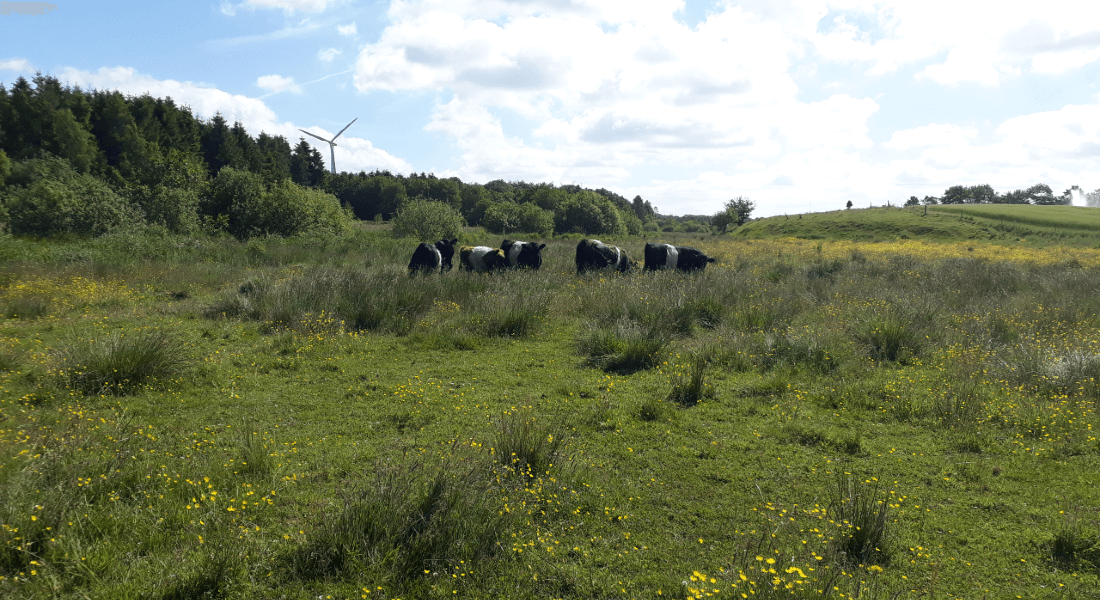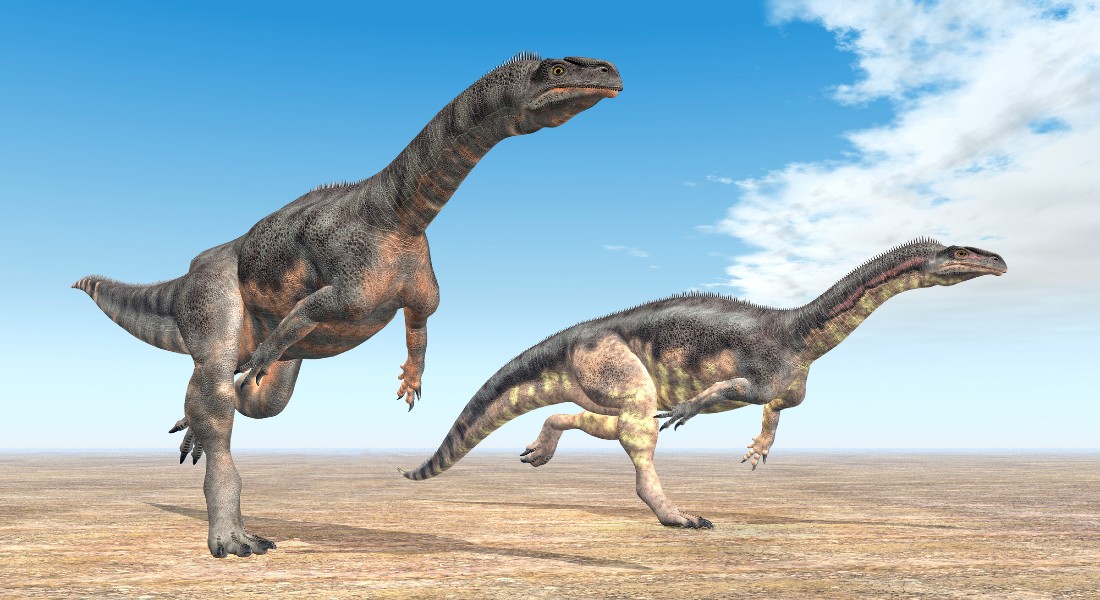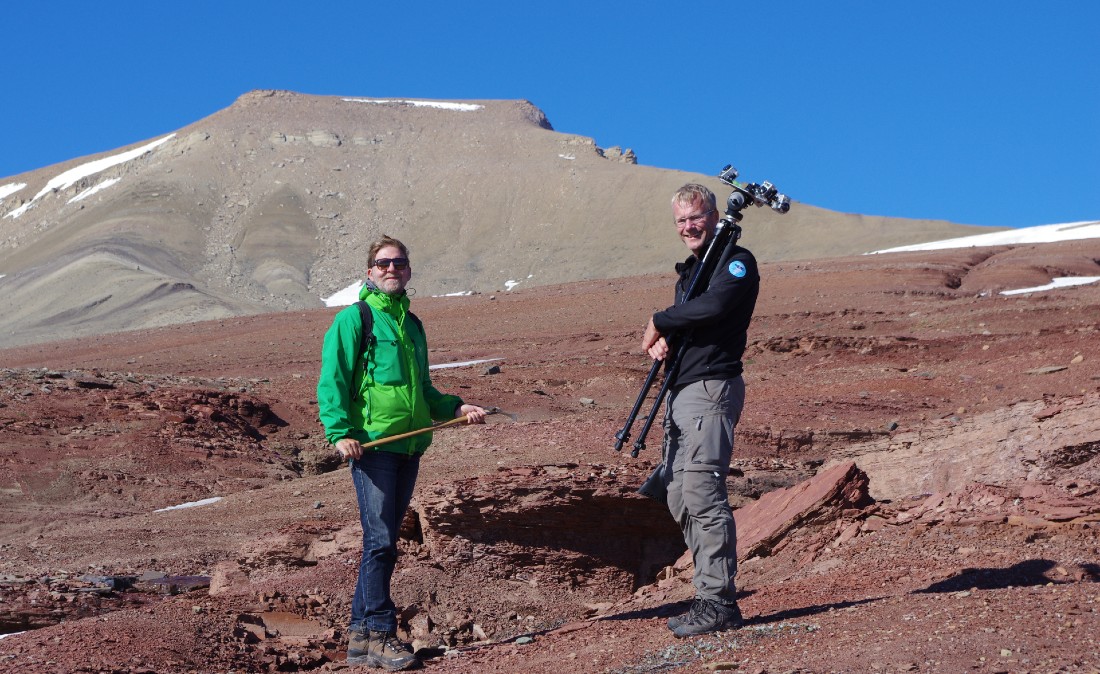
An epic walk: 15 million years needed for dinosaurs to get from South America to Greenland
For the first time, two researchers—one from the University of Copenhagen and the other from Columbia University—have accurately dated the arrival of the first herbivorous dinosaurs in East Greenland. Their results demonstrate that it took the dinosaurs 15 million years to migrate from the southern hemisphere, as a consequence of being slowed down by extreme climatic conditions. Their long walk was only possible because as CO2 levels dropped suddenly, the Earth’s climate became less extreme.

A snail could have crawled its way faster. 10,000 km over 15 million years—that’s how long it took the first herbivorous dinosaurs to make their way from Brazil and Argentina all the way to East Greenland. This, according to a new study by Professor Lars Clemmensen of the University of Copenhagen’s Department of Geosciences and Natural Resource Management and researcher Dennis Kent of New York’s Columbia University.
The herbivorous dinosaurs first appeared in Brazil and Argentina roughly 230 million years ago. This was during the early part of the Late Triassic period, the Norian, when the world consisted of one supercontinent called Pangæa, without any seas in between. The supercontinent allowed dinosaurs to disperse, unhindered from south to north. So, what took them so long to get to Greenland?

The answer lies in unique rock deposits consisting of a 350-meter-long unbroken layer series of fossil sediments with bones from about 10 herbivorous dinosaurs that the researchers found on expeditions in East Greenland, and for which Lars Clemmensen and Dennis Kent have now made an accurate dating of.
Drastic fall in atmospheric CO2 levels
Using studies of these ancient sedimentary deposits to help them, the two researchers were able to see that the herbivorous dinosaurs reached East Greenland exactly 214 million years ago. Interestingly, their timing coincides with a major climatic shift that most probably helped them move along. The event? A drastic decrease in atmospheric CO2 levels 215 million years ago.
-"We are able to see that during the period leading up to the dinosaurs' migration, there was ten times as much CO2 in the atmosphere than there is today. This made it difficult for them to disperse from their original habitat in the southern hemisphere, as higher levels of CO2 produce more extreme climatic conditions. The desert areas they needed to traverse were excruciatingly hot and dry and the humid equatorial areas were tremendously unstable and wet. As such, climate was most likely a barrier that delayed the dinosaurs’ northbound dispersion," explains Professor Lars Clemmensen from the Department of Geosciences and Natural Resource Management.
The dating was performed using magnetostratigraphic studies. Here, the researchers read the Earth's ancient magnetic fields in ancient lake deposits and compare them to similar, well-dated sedimentary sea deposits from elsewhere in the world. Even on a global scale, the researchers’ access to a 350-meter thick unbroken layered series of fossils which includes early herbivorous dinosaurs and other contemporaneous vertebrates is extraordinarily unique. The unbroken layer series has allowed them to accurately read changes in Earth's ancient magnetic fields and made dating the layers safe.
Carnivorous dinosaurs were 600,000 years faster
Herbivorous dinosaurs weren’t alone in East Greenland, which at the time was at the same latitude as the northeastern United States. Therefore, the area had a humid temperate climate. Small carnivorous dinosaurs had also made their way there. According to the researcher duo, the fossil finds in East Greenland and elsewhere also demonstrate that carnivorous dinosaurs were better at overcoming extreme climate barriers and migrating to new lands compared to their herbivorous relatives. The researchers' preliminary analyses show that the meat eaters reached East Greenland 600,000 years before herbivorous dinosaurs.
Lars Clemmensen, along with Danish, European and American researchers, has been on seven expeditions. Along the way, he has taken part in the work of discovering bones not only from herbivorous dinosaurs, but from carnivorous dinosaurs, flying lizards, labyrinthodontia and early mammals. The new dating method makes it possible to precisely determine their ages:
"With this new and very precise chronology, we have a tool to better understand the dispersal pattern of many early vertebrates on Pangæa. This holds especially true in the area between Northern Europe and East Greenland. We can go into every layer of soil where we have found bones and precisely determine their age,” says Lars Clemmensen.
The research results are published in PNAS.
Topics
Related News
Contact
Professor Lars Clemmensen
Mobile: +45 20514515
E-mail: Larsc@ign.ku.dk
Communications Officer
Katherina Killander
Mobile: +45 51 68 04 74
E-mail: klu@science.ku.dk


